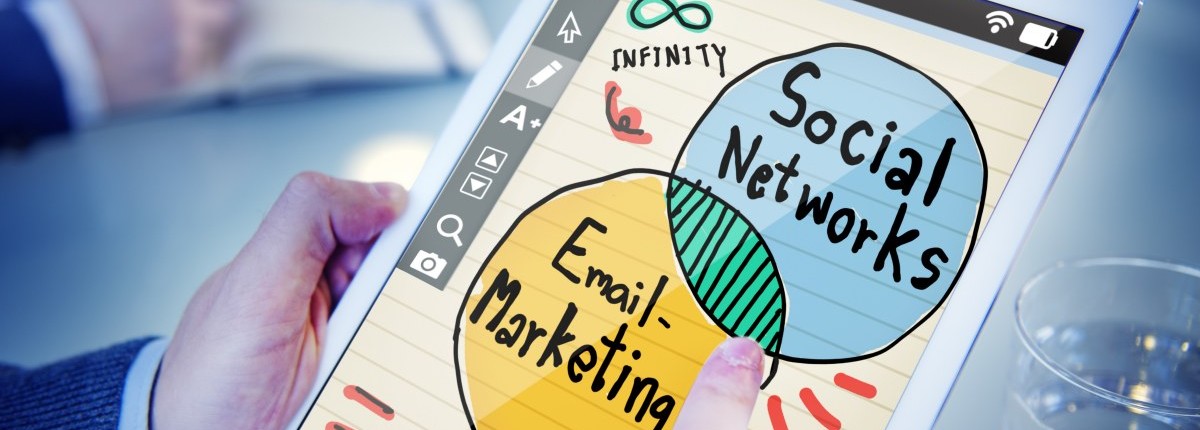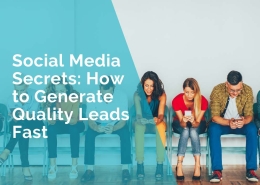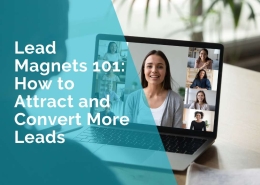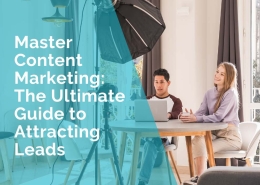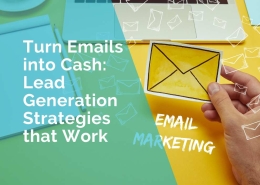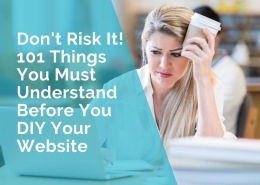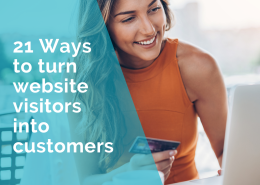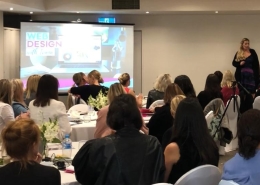30 Affordable Strategies That Will Make Your Business Grow
You are very excited!! You have finally created your own website!! But the trouble is customers aren’t knocking on your website door. Why? What should you do?
The most probable answer is that your customers don’t know about your website.
Creating a website is like building a house. If you don’t tell your friends they won’t know you’ve built a house. Even if they do know you’ve been building it, if you don’t tell them your address they’ll never find you.
And the same goes for your website. There is no magic internet fairy who will knock on people’s door to announce your website’s arrival. The task is up to you. To get your website marketing off the ground you either need to spend time learning and doing it or spend money and get somebody else to do it.
There are hundreds of ways to promote your business. You can do it on line or off line or a combination of both. Much will depend on your budget and the time you have available. Choose as many options below as your time and budget allows. Test as many methods of marketing as you can and see what brings you best results. Website marketing is not a one off exercise. You need to constantly work on it, fine-tune it, discard methods that are not working and implement new ones.
1. Email Marketing
Your first step should be to send an email to your existing clients announcing the arrival of your website. In your message, you can even ask them to forward your email onto their friends, family and colleagues.
If you are starting a new business and don’t have any customers, send an email to people you know who may be interested in your offer.
The next step should be to send your announcement to an opt-in email list. Opt-in email lists contain people or businesses who have requested to receive information about a certain topic(s). There are many companies who can provide you with these lists.
Under no circumstance should you EVER send unsolicited email (spam) to people you either don’t know or who have not requested to receive your information.
2. Leads
There are many companies who will provide leads or prospects for your business. For a fee, they will display your advertisement (similar to a classified ad) and when someone clicks on it, they will be taken to your website. The great thing about these targeted leads is that you are only paying for the people who want to know about your business and products. If you work out the cost of a lead versus regular advertising, you will no doubt come out on top. Generally the cost per lead is between $0.50 – $1.00. If on the other hand you advertise in a newspaper or a magazine and pay $200 for the advertisement from which you get 20 enquiries, the cost per lead is $10.
Check out: www.getresponse.com
3. Search Engines & Directories
A search engine is a searchable database of websites collected by a computer program (called a crawler, robot or spider). When you enter a keyword, the search engine looks for keywords in its database, and any relevant records are displayed. Currently there are thousands of search engines and directories on the internet.
Some of the main ones include:
Google – www.google.com
Altavista – www.altavista.com
Yahoo – www.yahoo.com
Excite – www.excite.com
AllSearchEngines – www.allsearchengines.com
Northern Light – www.northernlight.com
DogPile – www.dogpile.com
AllTheWeb – www.alltheweb.com
Lycos – www.lycos.com
When submitting your website to the search engines, you can either do it manually by going to the search engine website and adding your URL (website address) or you can employ the services of a Search Engine Submission company, who will do it for you.
Search engines try to list sites that contain good content, so you need keywords and phrases on your pages that best describe your service and products. For example, if you are a florist, use the words such as florist, online florist, virtual florist, wedding florist, florist in Sydney, florist on line, flowers, floral, bouquets, floral arrangements etc as many times as possible to ensure high search engine ranking. To find out what keywords your customers may be searching check out Wordtracker or Google Keyword Suggestion Tool.
Once you decide on the keywords, use them in
(a) Your website’s domain name
(b) The title of your page – This is displayed in the top bar of your browser window
(c) The heading of your home page
(d) The first paragraph of your home page
(e) Meta tags – Keywords, page title, description
(f) Titles of your graphics
Whilst it is important to use keywords as much as possible, it is also important you use them only if they are relevant and do not sound awkward. If you spam your keywords you may be penalised or even banned by some search engines.
If this all seems too overwhelming, you can employ the services of a Search engine optimization company, who will rewrite your content to make it more search engine friendly to make it rank higher.
4. Link Exchanges
Find websites whose business complements yours and add their website to your links/resource page. Then contact the company and ask for a reciprocal link. For example if you are a wedding dress designer, you could contact businesses that sell wedding cakes, jewellery, flowers and also venues, celebrants etc.
By doing this your website will become a valuable resource for your visitors, as it will provide information they need. They may return to your site over and over to find more information.
On the other hand, you will have visitors coming to your website when they following a link from your link partners.
Results in search engines are determined by the material you have presented on your site and by other off-page factors such as how many other sites link to your site. The more links you have pointing to your site from relevant websites, the higher your site will rank.
If you need help with this task, you can employ the services of a Link Exchange Company. They are generally inexpensive and can save you hours of time.
5. Banners
Banners are graphics, which are linked to a website.
You can create your own banner and either exchange it with someone, so that you display their banner on your site and in return they display your banner on their site. Whenever someone clicks on the banner, they are taken directly to the advertised website.
To save time, you can join a Banner Exchange programs.
6. Email Signature
Every email you send should have an email “signature.” This is text that is automatically attached to the bottom of your email message. This text can be used to publicise your business. You can include your name, business name, email address, street or postal address, website details, phone number, fax number, company slogan, description of your company and its products/services. You can set up different signatures for different purposes.
To set up your signature using Outlook Express:
Step 1: Select Tools > Options from the menu bar.
Step 2: Click “Signatures”.
Step 3: Make sure that you select “Add signatures to all outgoing messages” – within the “Signature settings” section. It is up to you whether you would like your signature to appear in “replies” and “forwards”
Step 4: Click “New” (you can change the name from “Signature #1” by clicking “Rename”) – within “Signature” section:
Step 5: Type in the text that you would like to appear at the end of your email messages – in “Edit signature” section:
Step 6: If you’re happy with this, click “Apply” and “OK”.
7. Feedback and Testimonials
When you come across a great product or service on or off the internet, send an email to the business owner telling him/her how the product/service helped you. Like you, most business owners appreciate receiving positive feedback and they will most likely feature your testimonial on their website and place a link back to your site! You may even suggest it to the owner by saying something like “you have my permission to feature this testimonial in your promotional material and/or on your website”.
8. Giveaways
Offering free giveaways to prospects and clients is a powerful business building strategy that can result in a flood of new and repeat customers. If your business is service orientated, you can “give away” a free consultation. Your prospects will get to test your business risk-free. Hopefully they will get “hooked” on your service and won’t be able to live without it.
By providing someone with a “favour”, people generally feel a natural obligation to return the favour by giving you repeat business.
For product based businesses, you may consider a “buy 1 get 1 free” or “buy one and get second one at a discount” or give something totally unrelated, for example ”Buy a pair of children’s shoes and receive a colouring book for free”.
Think about what you can offer free-of-charge that your prospects would consider valuable and that you can give at a low cost to you.
9. Trade shows
Trade shows are a very powerful marketing medium because they generally take place at a single location, have short runs (usually one to three days), and bring together thousands of exhibitors and potential customers.
Common reasons for exhibiting include: Generating sales leads and actual sales at the show, enhancing your image and visibility, reaching a specific audience, personally meeting your customers, competitors and suppliers, prospecting for new customers, introducing new products and services, demonstrating your product in ways not possible using other marketing channels, recruiting distributors or dealers, educating your target audience.
There are probably several trade shows in your industry worth visiting, and a select few worthy of a company booth. Start by researching which shows to attend. Identify the locations and dates of all the trade shows related to your industry. Request media kits on each show, which should tell you about its size, target market and typical exhibitors. If your direct competitors are likely to exhibit, your company may be conspicuous if absent.
It’s a good idea to exhibit at least once a year just to get your name out there, especially if you’re an early stage startup looking for publicity — or funding.
Once the show space specifics have been established, then you can move on to deciding what to take and how you can ‘show your stuff’.
The following are just a few ideas to help you get ready for that all important trade show.
a) If the trade show display table you have does not include a tablecloth, be sure to get one that complements your display and represents your company’s image and colour
b) Erect a stand-alone presentation board. On the board, you can show how clients can benefit by using your products/services. Be creative and make it stand out. Include pictures, if possible, and be sure your company name and logo are more than obvious.
c) Arrange your trade show display table in levels. Put the larger items at the rear, shorter items in front of those, and even shorter items in front of those.
d) Develop a PowerPoint presentation to display on your table. You can make it on your desktop computer and transfer it to a laptop, which you can rent or borrow if you don’t already have one. Your visitors will find this visually appealing and it will draw in their attention.
e) Have plenty of trade show giveaways, such as business cards, brochures, pens, magnets, and anything else that has your company name and/or logo on it.
f) Offer something a little different as a trade show giveaway… FOOD. Package your food in a way that will allow you to have your company contact information on it.
g) Offer Gift Certificates for some of your services as a trade show giveaway.
h) Have a draw for a prize. Offer a prize that in some way complements your business if possible, and appeals to anyone. Have visitors and entrants sign a guestbook, fill in a ticket, or drop their business cards into a fish bowl or gift bag. The great thing about this trade show giveaway is that you can then use this information at a later date to make a follow up contact.
i) Have a portfolio of your work available as part of your trade show display. Print off some of your best projects, put them into plastic sheet protectors, and arrange them in a binder.
10. Classified Ads
Classified ads are one of the most inexpensive ways to advertise your products or service. Unfortunately many people misuse classified ads. They try to sell a product directly from the ad. The best way to use a classified ad is as a two step process.
(a) You place a classified ad in your local newspaper/magazine. The ad should be simple and straight to the point. It should then direct readers to call a phone number of your answering machine.
(b) Your customer will dial the number where they will hear a powerful sales message and at the end customers are directed to send an order to the address you give on the tape or they can leave their contact details.
An example of such classified ad would be:
“Double your mail order business’ profits. Incredible recorded message tells secrets. Call 1234 5678 24hours or visit www.yourcompany.com”
People read classified ads for a purpose. They are specifically looking for products, services and information that appeals to them.
The selection of words you use is the most important aspect of classified ad copy. You need to choose precisely but don’t skimp on words to save the cost in the ad.
The best way to prepare copy is to first write about your products/services at length. List all the major benefits and features. Choose a powerful heading that points out the most significant aspect of your product. Follow up with a few words or details and finish with a request to contact for more information.
11. Domain Name
Your domain name represents one of the most important decisions you have to make in going online. The purpose of a domain name is similar to that of a street address or telephone number. The domain name directs customers to you on the Internet. The most popular domain names in Australia are “.com.au” and “.com”.
Ideally your domain name should be rich in keywords (words relating to your business) to ensure on-line success, especially with search engines.
If for example, you are a florist based in Sydney, it would be preferable for you to have one of the following domain names:
www.sydneyflorist.com.au
www.florist.com.au
www.sydneyflowers.com.au
You will, however, find that generic names such as the above are already taken. In that case, register something like:
www.cindysflowers.com.au
www.sydneyflowersandgifts.com.au
If your business name is for example “Jim & Sons”, ensure you include a description of what you actually do, eg.
www.jimandsonscarpetcleaning.com.au or
www.jimscarpetcleaning.com.au
12. Affiliate programs
Affiliate programs also known as reseller programs are an agreement in which a website owner displays an ad for another company in exchange for a commission on the resulting sales and/or leads.
There are two ways you can start your own affiliate program.
(a) You can have a service bureau take care of nearly everything for you. They’ll handle the recruiting and administrative functions like sending out payments, tracking, reporting etc. A good example of a service bureau is Commission Junction – www.cj.com
(b) Set up an affiliate program yourself, using on-line services.
Tips for setting up successful affiliate programs:
(a) Should be free to join.
(b) Offer real time statistics so that affiliates can check their sales and commission without having to contact you.
(c) You should provide your affiliates with proven tools they can use to sell your products (eg. Sales letters, endorsement letters, banners, ezine articles, ezine ads)
(d) Technical support 24/7
(e) Stay in touch with your affiliates to keep them motivated
(f) Give your affiliates the highest commission you can.
13. Autoresponders
Email autoresponders work like a fax-on-demand system. If you send an email to an autoresponder address, you’ll get back a pre-written message. Autoresponders have come a long way in the last couple of years. Not only are you able to send HTML messages with graphics, but you can set up a whole sequence of autoresponder messages going out on any day or at any time you choose.
Once you set up your email messages, everything gets done automatically. As soon as a prospect sends an email to your autoresponder, the system keeps working over and over again, like a tireless robot making sure no prospect ever slips through the cracks. Most autoresponders systems now handle your whole mailing list, so you are not having to manually manage your prospects.
Because the vast majority of customers will not buy from you on their first visit to your website, it is extremely important that you have an automated way to follow up with them several times to entice them back. You can use autoresponders to cross-promote various products and services your business offers.
Follow these tips and you can’t go wrong:
(a) Make time sensitive offers in your email follow up.
(b) Build extra incentives into each follow up, until your prospect can’t resist any more. Offer free reports, free ebooks, freeware programs, mini-courses etc
(c) Include a survey as part of your autoresponder sequence, so you can find out what your customers like about your messages, what they dislike and what other information they want.
Some great autoresponders include:
www.getresponse.com
www.aweber.com
14. Bonuses
We all love freebies and your customers are no exception. Ideally you should pile on the bonuses to get people excited. Sometimes they will buy the main product only to get the bonuses. The easiest and least expensive are informational products – reports, articles, ebooks. You can find literally thousands of these on the internet. Simply go to your search engine and find one that would appeal to your target audience. For example, if you sell wedding cakes, you may wish to give away ebooks or reports on planning a wedding. If you sell children’s clothing, you may wish to give away tips on parenting or ebook which features activities to do with your children.
15. Newsgroups
A newsgroup is a message board on the internet where users come to discuss topics of mutual interest. As a user you can start a thread (topic), post messages and respond to other postings. There are tens of thousands of Newsgroups on every possible subject. The best way to find a suitable newsgroup is to use Google Search. Go to www.google.com. Then click on the “Groups” tag. Run a search using a keyword related to your on-line business that you would like to promote from the groups search page. For really worthwhile information use moderated groups.
You can use Newsgroups for conducting market surveys, get new clients, promote your site, get answers to your questions, make friends.
The idea of newsgroups is to make a valuable contribution and by doing so promoting your business. Please do not post commercials, ads or press releases and never post unrelated messages as this will be considered spamming.
16. Office Stationery & Merchandising Materials
It is extremely important that your website is included on ALL your office stationery so that customers can see it over and over again. That way they are more likely to remember it. If you’ve just had your letterheads printed, you can always add your website address on your wordprocessor, when printing your correspondence. For brochures, business cards etc, consider having small labels printed up. Your office stationery should include not only your website address, but also your email.
Consider adding your details to:
– Letterheads
– Business Cards
– Flyers
– Brochures
– Labels
– Packaging
– Merchandise bags
– Catalogs
– Invoices
– Fax headers
– Display units
17. Pay per click (PPC)
Pay per click advertising is when an advertiser (you) pays for each qualified click that sends a search engine user to the advertiser’s web page. PPC requires you to bid on keywords or phrases that relate to your business. The best known pay per click services are Google AdWords and Overture.
Generally you can bid from as little as a few cents per visitor. However, the more you bid the higher up in the search engine your advertisement will appear. Pay per click is a great way to deliver targeted and qualified visitors to your website at a very reasonable price.
It is a good idea to experiment with different PPC search engines to find the one that works best for you. In addition, you will need spend time testing your keywords and ads.
For more information check out:
Google Adwords – https://adwords.google.com
Overture – www.overture.com
If this is all too hard, you can employ the services of a Search Engine Marketing company.
18. Visitor Exchanges
There are many websites popping up on the net that are known as Traffic Exchange, Click Exchange, Visitor Exchange or Surf For Hits programs. People become members of these sites with the goal of generating free traffic to their site.
The way it works is quite clever.
You visit another member’s website and in exchange someone visits the website of your choice. Most of these programs work on a 2:1 ratio. This means that for every two sites that you visit, someone else in that same Start Page program will visit your site.
Simple concept, isn’t it?
The great thing about these programs is that you will receive all of this traffic to your website, without having to spend a dime
One of the biggest benefits from these programs is the ability to develop a downline of people that will generate 1,000’s upon 1,000’s of click thru visits to your site over time! In other words, you receive credits for the credits they chalk up for themselves!
19. Articles
Writing articles is an excellent way for you to get free publicity. Getting an article published is free. The publicity you receive by having your article published in a newspaper, magazine or website can be worth thousands of dollars in equivalent advertising space. Well written articles yield better results than advertisements and earn you respect from customers, who see you as an expert in your field.
The best articles are “tips” or expert pieces. People are looking for guidance and will purchase from the experts who show them how to solve their problems.
Your article should include the following elements:
(a) The Headline
This should be attention grabbing and use power words and phrases, such as “How to …” “10 Ways that …”, “Do you want to …”
(b) Lead Paragraph
The first couple of sentences should tell your readers why they should read the whole articles. Show them the benefits they will gain or the pain that they will avoid by reading the article.
(c) Body Copy
This is where you inform the reader how to do something that will enrich their business or personal lives. Use short sentences and provide step-by-step directions that they can easily follow.
(d) Conclusion
At the end you will want to summarise the topics you covered and briefly review the main points. Since you have helped your readers they will most likely want to know more. This is your chance to make your sell by making them an offer with a call to action.
(e) Resource Box
The resource box should supply the reader with the following information:
– Your name
– Company name
– Contact information
– Website details
– How to order your product, etc
If writing an article seems too daunting for you initially, you can hire a ghost writer to do this for you – generally at a very reasonable price. If you need someone to help you with this, you may wish to check out:
www.elance.com
Once your article is written you will need to submit it to various publications on-line and off-line. For a listing of Australian printed publications, including the editor’s details, you may wish to buy “The Australian Writer’s Marketplace”, available from most bookshops.
For a listing of on-line magazines (e-zines), visit: www.ezine-dir.com. You can then contact the editor of each magazine and offer them your article.
If you don’t have a lot of time to submit your articles manually, you may wish to consider using article submission services by companies such as:
Submit Your Article – www.submityourarticle.com or
The Phantom Writers – www.thephantomwriters.com
For a small fee they will submit your article to thousands of publications.
20. Webrings
One of the more interesting ways to add some targeted traffic to your site is to join webrings. A webring allows visitors to surf through sites that are related in one way or another. They are free of charge to the owners, members and visitors.
Webrings deliver targeted traffic day after day and once they are set up they tend to stay set up with little further maintenance
Each webring is created and maintained by a person known as a ringmaster. This person accepts site submissions and validates that the site meets the topic of the webring. For more information visit: www.webring.org
21. Ezine Advertising
One of the best, cheapest and most targeted way to promote your product or service is through ezines (electronic magazines). Ezine ads reach people who want what you have to offer. As Ezines are generally based on a theme or particular interest and their subscribers have requested to receive them, you can be sure that they are going to be read.
Prices for advertisements vary depending on the popularity of the ezine and the actual location of your ad. Top position ads generally cost more than those found mid-way or at the bottom. Most ezine publishers will also send solo ads (advertisements about your product/service) to their subscribers. However, this is generally more costly.
To get the most of your ad, ensure you develop a killer title or headline and that the ad is straight to the point.
The best way to get started advertising in ezines would be to contact the editors of various ezines and check their rates, publication dates and number of subscribers – go to www.ezine-dir.com or www.go-ezines.com for a comprehensive listing of ezines.
22. Publishing an Ezine or Newsletter
Whether you are the CEO of a multi-national corporate network or a stay-in-your-pyjamas entrepreneur, one of your primary business objectives should be to develop long-term relationships with everyone you communicate with – website visitors, prospects, customers, employees, suppliers, service providers etc. And one of the best methods of building strong relationships is through your own Ezine (electronic magazine) or Newsletter.
If you’ve been marketing on the Internet, then you know it may take several contacts with a prospective customer before closing a sale. What better way to make those contacts, without spamming… In addition, you can eventually make a nice income selling sponsor advertising and classified ads.
To publish an effective Ezine will take some time to develop and there are thousands of resources on the internet that will help you – simply go to your favourite search engine and type in “ezine publishing” or “ezine publishing articles”.
In the meantime, here are some tips to get you started.
(a) Give your readers quality content – not rehashed or well-worn articles that have been published hundreds of times alread
(b) Write your own articles whenever possible or hire a ghost writer to help you. Talk to your readers as you would normally talk. Be yourself and let your sense of humour and uniqueness show through in your writing.
(c) Ensure the ezine has been properly edited, you have checked your spelling, grammar and formatting. Ensure all the links are working
(d) Personalise each issue for your subscriber. If your email software allows it, include a field so that your ezine is addressed to your subscriber by their firstname.
(e) Don’t publish too many ads or too many affiliate links
(f) Ask for feedback to help you improve your ezine
(g) Stick to publishing a text ezine rather than HTML.
(h) Publish your ezine regularly and on time.
23. Media Releases
Having a story written about you and your business will not only bring you lots of new customers (at no cost to you), but will also provide you massive credibility. Stories about you in the media are far more believable, powerful and attractive than any ads you could possibly run. People will trust and respect you instantly.
A media release (also called press or news releases) should provide enough details to be informative, but it should leave out just enough information to be tantalizing that the media person calls you to find out more.
Your media release should feature the following:
(a) The Headline
This is 90% of your release. Your headline will do almost all of the work in attracting attention to you.
(b) The Summary
This is the first part of the media release and should tell your story briefly.
(c) Credentials & Quotations
Insert quotes from other people and include the person’s credentials
(d) Call to Action
What do you want the person reading this release to do? You want them to call you for an interview. So provide your contact details and write a very brief outline of why you would be an interesting person to interview.
For more information about writing media releases visit:
PRWeb – Tell your company story to thousands!
Press Release – www.pressrelease.com.au
Elance – www.elance.com
PRNewswire – www.prnewswire.com
NewsBureau – www.newsbureau.com
24. Radio advertising
You may have shied away from radio advertising, thinking the cost would be well over your budget and it may very well be if you were to advertise on commercial radio stations. But have you considered community radio stations? There are hundreds of them around and the great thing is that they will reach your local market. For community radio stations in your area, visit your local yellow pages or search on the internet.
25. Print advertising
Writing the Copy
When it comes to print advertising, you have to get to the point—fast. Your headlines should motivate readers to want to read on to learn more about your product, price and offer. Effective headlines address a pressing customer need or desire. The reality is that people care more about themselves—and what you can do for them—than about your business. You’ll get a much higher response rate when your headline quickly answers the question, “What’s in it for me?”
In the body of your copy, offer an incentive for the reader to call you or come to your store. You may want to offer a discount or a free giveaway
Placing the Ad
Newspaper ads are very effective for businesses that market their products and services locally. Not only can you reach a large number of people in a specific metropolitan location, but you can also target prospects via their interests (in the sports, lifestyle and business sections, for example).
Advertising costs depend on a number of factors, including the size of the ad, where it’s placed, the day it runs and so on. Call and request a media kit from the newspaper or magazine so you can determine what advertising steps you can take that will fit with your marketing budget, possibly using an AI Budgeting tool to help manage costs.
Consider placing print advertisements in local publications, national publications,
industry publications, target market specific publications, yellow pages, local directories, special catalogues
26. Postcards
If looking to target potential customers, don’t overlook postcard marketing. Postcards achieve almost a 100% readership, while being simple to use and inexpensive.
Postcards:
– keep your name in front of customers
– generate a high return on investment
– are flexible, informative and creative
– have high impact and low cost
Postcards can be used to:
– generate website traffic and sales leads
– promote new specials or company awareness
– announce new products, websites, store locations
– thank customers
– use as a discount offer /coupon
Repetition is the key to effective marketing efforts and postcards offer an inexpensive way of doing it.
27. Word of Mouth / Testimonials
Word-of-mouth marketing truly is one of the best ways to promote your business. The three most important things you can do to start the process of increasing your business through word-of-mouth include:
(a) Diversify your networks by becoming visible and active in the community. Participate in various networking groups and/or professional associations.
(b) Set up a contact list of businesses that are complementary and non-competitive to you. For example: a lawyer, an accountant, a financial planner and a banker. All of them have clients with overlapping similar needs. They can all work with and refer each other easily. Another good example is a florist, a photographer, a travel agent and a jeweler. A referral for one of them becomes a referral for all of them.
(c) Building your business through word-of-mouth is about cultivating relationships with people who get to know you and trust you. People do business with people they have confidence in. It’s not what you know, or whom you know, it’s how well you know them that counts. If you go into this process understanding this one key point, you will have a better opportunity to build your business through word-of-mouth.
28. eBay
If you sell products (as opposed to services) in your business, one of the best marketing tools you can use is eBay. eBay is a community where individuals and businesses can buy and sell a vast range of new and used items at fair market prices.
The main reasons why you should sell on eBay include:
– You can sell little or lot of practically anything from antiques to cars.
– Gain access to the millions of eBay buyers worldwide.
– Feel safe with policies and protections of the Community.
– Sell as an individual, small business, enterprise, and more!
For more information visit: www.ebay.com for selling globally or www.ebay.com.au for selling within Australia.
29. Viral marketing
On the Internet, viral marketing is any marketing technique that induces Web sites or users to pass on a marketing message to other sites or users, creating a potentially exponential growth in the message’s visibility and effect. One example of successful viral marketing is Hotmail, a company, now owned by Microsoft. Their strategy is simple:
(a) Give away free e-mail addresses and services,
(b) Attach a simple tag at the bottom of every free message sent out: “Get your private, free email at http://www.hotmail.com” and,
(c) Then stand back while people e-mail to their own network of friends and associates,
(d) Who see the message,
(e) Sign up for their own free e-mail service, and then
(f) Propel the message still wider to their own ever-increasing circles of friends and associates.
Some viral marketing strategies work better than others. Below are basic elements you should try to include in your strategy.
(a) Give away products or services
Most viral marketing programs give away valuable products or services to attract attention. Free e-mail services, free information, free “cool” buttons, free software programs etc
(b) Provide for effortless transfer to others
The medium that carries your marketing message must be easy to transfer and replicate: e-mail, website, graphic, software download. From a marketing standpoint, you must simplify your marketing message so it can be transmitted easily and without degradation. Short is better.
(c) Scale easily from small to very large
To spread like wildfire the transmission method must be rapidly scalable from small to very large. Ensure you have enough resources, such as mail servers and staff that will be able to handle the increase in business.
(d) Exploit common motivations and behaviors
Clever viral marketing plans take advantage of common human motivations such as greed, the desire to be cool, hunger to be popular, loved, and understood.
(e) Utilize existing communication networks
Each person has a network of 8 to 12 people in their close network of friends, family, and associates. A person’s broader network may consist of hundreds or thousands of people. People on the Internet develop networks of relationships, too. They collect e-mail addresses and favourite website URLs. Affiliate programs exploit such networks, as do permission e-mail lists. Learn to place your message into existing communications between people, and you rapidly multiply its dispersion.
(f) Take advantage of others’ resources
The most creative viral marketing plans use others’ resources to get the word out. For example, affiliate programs place text or graphic links on others’ websites, authors give away free articles, news release can be picked up by a large number of publications as they form the basis of articles seen by hundreds of thousands of readers.
30. Joint Ventures
A joint venture is an agreement in which two or more businesses work on a project for a set period of time. Joint ventures can be long-term or short-term. With joint venture you can:
(a) Build long lasting business relationships.
(b) Increase your credibility by teaming up with other reputable, branded businesses.
(c) Get free or discounted products and services.
(d) Set up most joint venture deals with little or no money.
(e) Gain new leads and customers.
(f) Offer your customers new products and services.
(g) Get rid of your extra inventory.
(h) Find and create new distribution channels for your products.
There are many excellent ebooks on internet marketing. I would strongly recommend you pick up at least one or two and start reading.
*****
by Ivana Katz
Websites 4 Small Business – www.web4business.com.au


